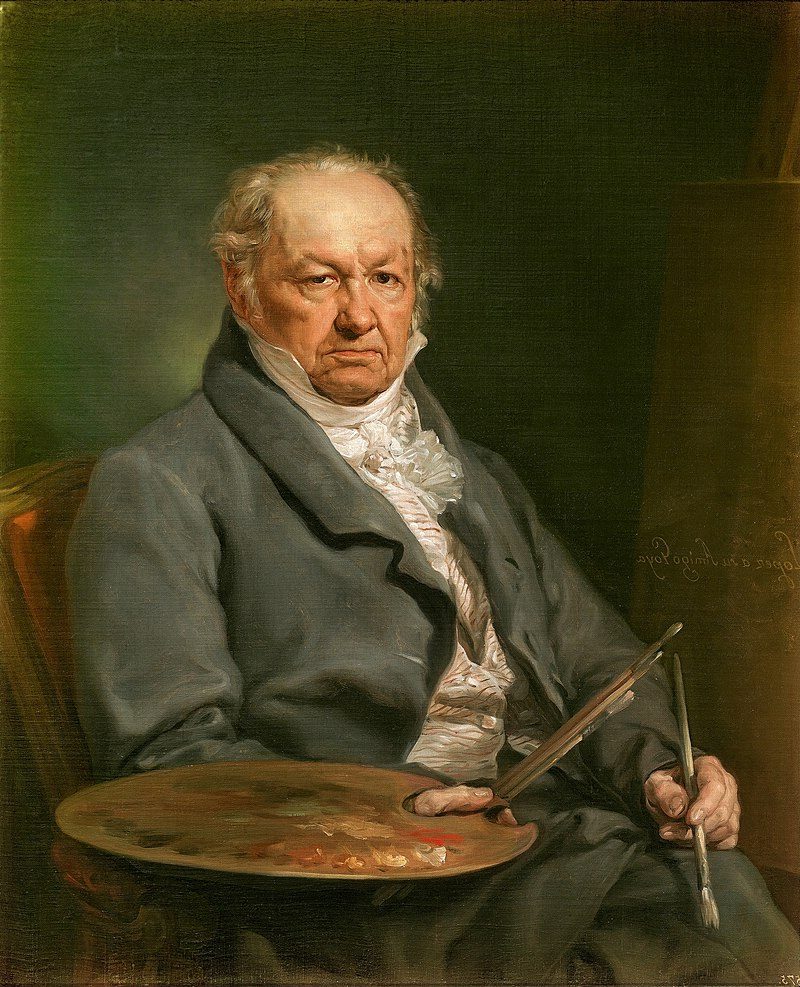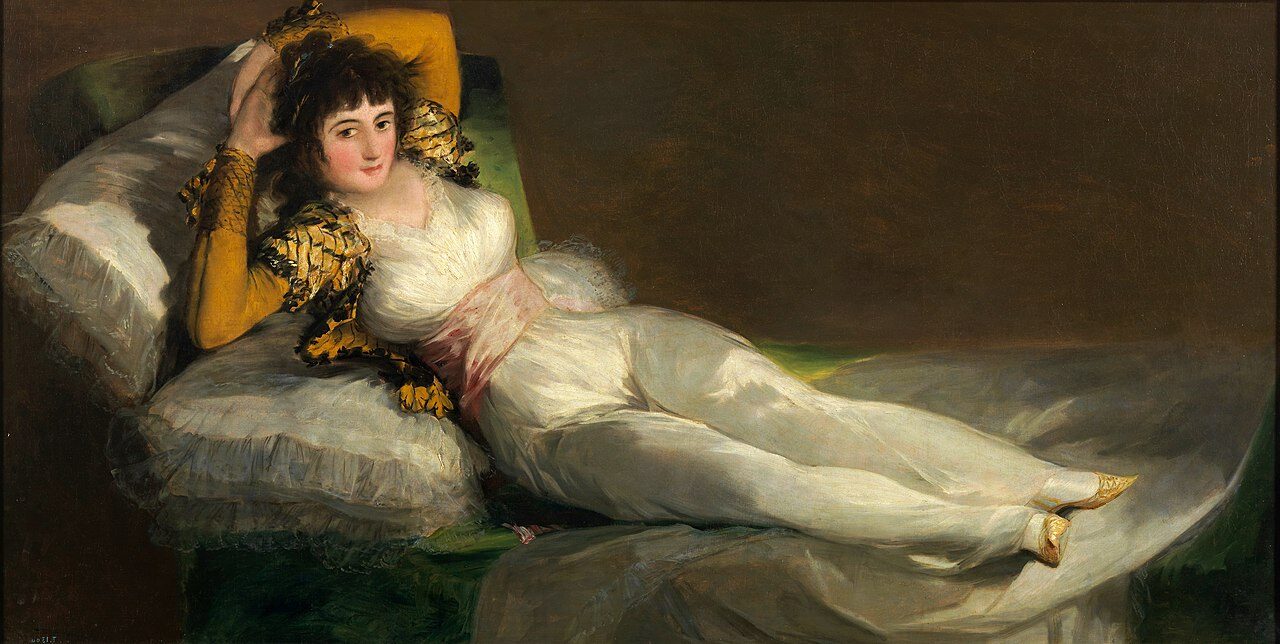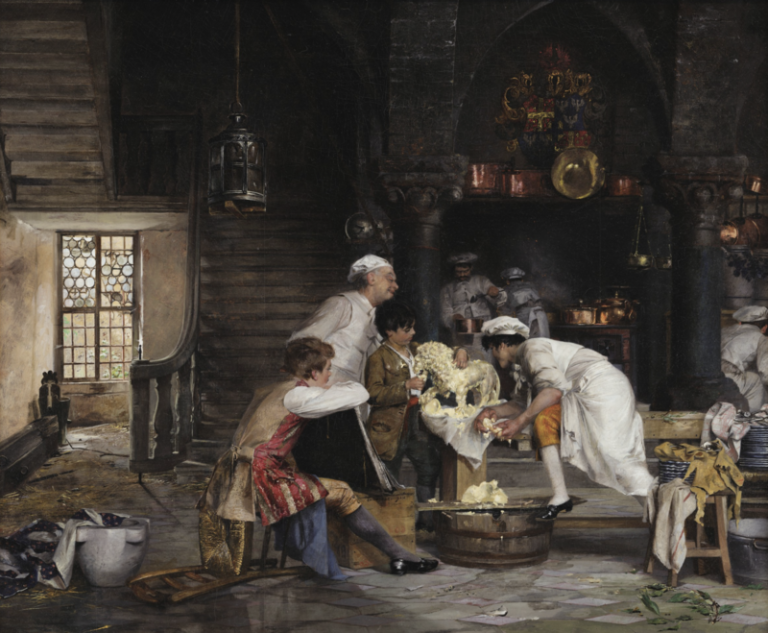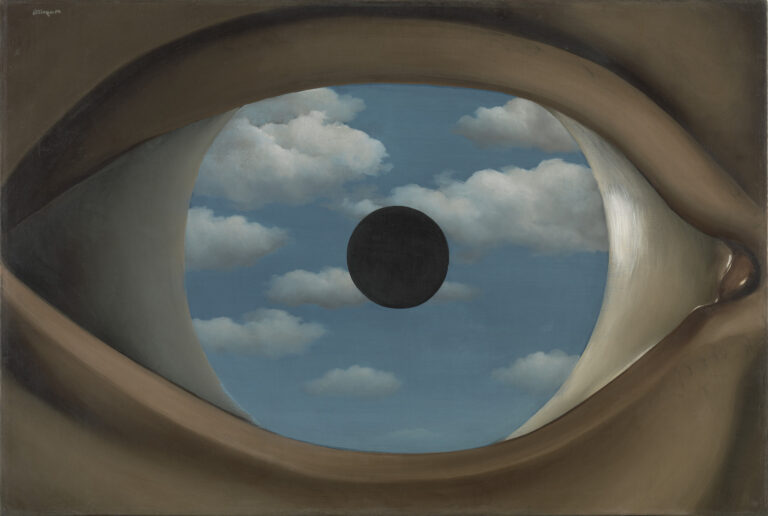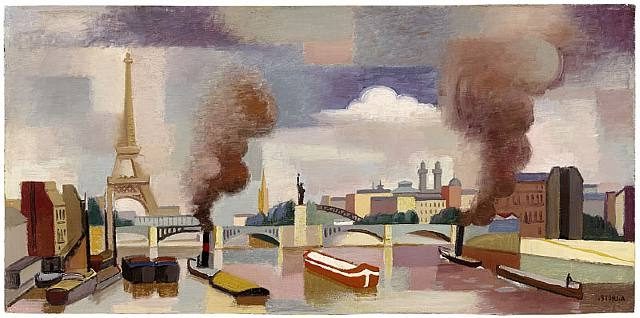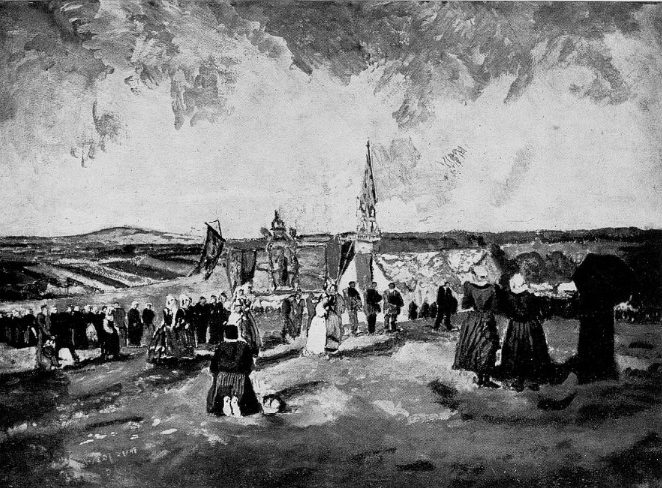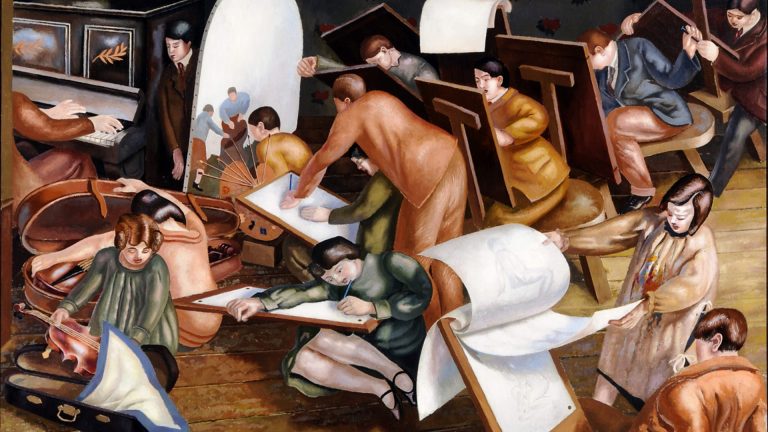Francisco Goya Painter: The Revolutionary Spanish Master of Romantic Art
Born: 30 March 1746, Fuendetodos, Aragon, Spain
Death: 16 April 1828, Bordeaux, France
Art Movement: Romanticism
Nationality: Spanish
Teacher: José Luzán
Francisco Goya Painter: The Revolutionary Spanish Master of Romantic Art
Life and Career of Francisco Goya
Francisco Goya emerged as one of Spain’s most influential artists during the late 18th and early 19th centuries. His career evolved dramatically from traditional court painter to a creator of profoundly personal and sometimes dark works that explored human nature and society.
Early Years and Artistic Training
Born on March 30, 1746, in Fuendetodos, a small village in Aragon, Spain, Goya came from a modest background. His father was a gilder, which gave young Francisco early exposure to artistic craftsmanship.
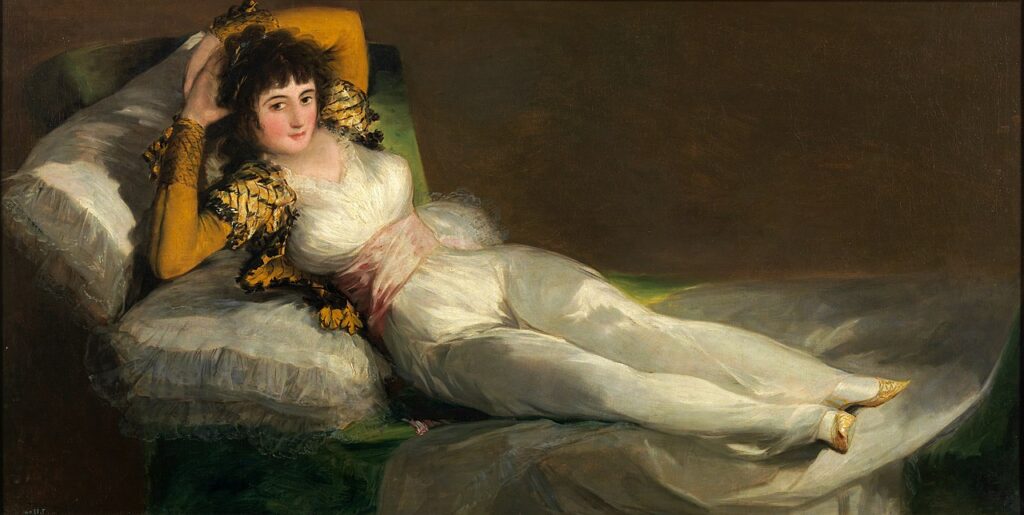
La Maja Vestida (1800–1805) by Francisco Goya
At age 14, Goya began apprenticing with local painter José Luzán. During this four-year training period, he learned to copy prints and developed basic painting techniques.
In 1763, Goya traveled to Madrid where he attempted to gain admission to the Royal Academy of Fine Arts. After being rejected twice, he journeyed to Italy to study the masters, a common practice for developing artists of the time.
Upon returning to Spain in 1771, Goya secured work painting frescoes for the Royal Tapestry Factory. These early commissions showcased his talent for bright colors and scenes of Spanish life.
Rise to Prominence
Goya’s career accelerated in the 1780s when he received commissions from Spanish nobility. His portraits displayed remarkable psychological insight alongside technical skill.
In 1785, he was appointed Deputy Director of Painting at the Royal Academy. This position validated his artistic abilities and provided valuable connections to Spain’s elite society.
His painting style during this period blended Rococo influences with a growing realism. Works like “The Parasol” (1777) and “The Clothed Maja” (1800-1805) demonstrated his versatility.
A crucial turning point came in 1793 when a serious illness left Goya permanently deaf. This personal tragedy profoundly transformed his artistic vision, bringing darker themes and social criticism into his work.
Court Painter and Later Years
In 1799, Goya reached the pinnacle of his official career when King Charles IV appointed him First Court Painter. Despite this prestigious position, his portraits of the royal family showed honest, sometimes unflattering depictions.

The Third of May 1808 (1814) by Francisco Goya
The Napoleonic invasion of Spain (1808-1814) dramatically affected Goya’s outlook. His response produced powerful works including “The Third of May 1808” (1814), which depicted the horrors of war with unprecedented emotional intensity.
Between 1810 and 1820, Goya created his famous “Black Paintings.” These dark, haunting works covered the walls of his home and revealed his increasingly pessimistic worldview.
During this period, Goya also produced his etching series “Los Caprichos” and “The Disasters of War,” using these mediums to critique social problems and human folly.
Final Period and Bordeaux Exile
Political upheaval in Spain forced Goya into self-imposed exile in 1824. At 78 years old, nearly deaf and in declining health, he settled in Bordeaux, France.
Despite his advanced age and physical limitations, Goya continued creating art with remarkable energy. He explored new techniques, including lithography, demonstrating his endless artistic curiosity.
His final works, including intimate portraits and scenes from everyday life, showed a lighter palette than his earlier dark period. The “Bordeaux Sketchbooks” reveal his continued sharp observation of human behavior.
Goya died in Bordeaux on April 16, 1828, at age 82. His artistic journey spanned from court painter to visionary modernist, leaving a legacy that would influence generations of artists from Manet to Picasso.
Artistic Style and Innovations
Goya’s artistic journey represents one of the most remarkable evolutions in Western art history. His work spans several artistic movements and demonstrates his ability to adapt while maintaining a distinctive personal vision.
Transition from Rococo to Romanticism
Goya began his career creating light, decorative works in the Rococo style popular in 18th century Spain. His early tapestry cartoons featured bright colors and cheerful scenes of everyday Spanish life. These works, like “The Parasol” (1777), showed his technical skill but gave little hint of his later direction.
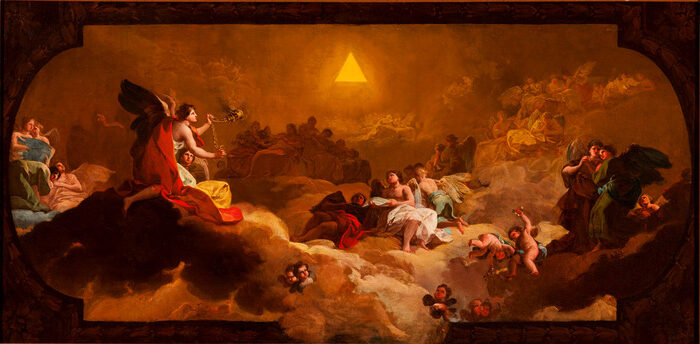
The Adoration of the Name of the Lord (1772) – Francisco Goya
As political turmoil gripped Spain, Goya’s style shifted dramatically. The French invasion and subsequent Peninsular War (1808-1814) profoundly affected his outlook. His painting “The Third of May 1808” marked a decisive break from Rococo lightness toward Romantic emotional intensity.
This transition wasn’t sudden but evolved through his royal portrait commissions. While maintaining technical precision, he began incorporating darker themes and more psychological depth in his subjects.
Development of a Unique Style
Goya developed a style that defied easy categorization. His “Black Paintings” (1819-1823) represent his most personal and disturbing works. Created directly on the walls of his home, these dark visions like “Saturn Devouring His Son” reflected his growing pessimism.
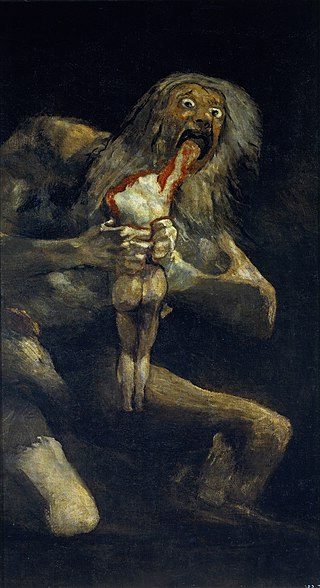
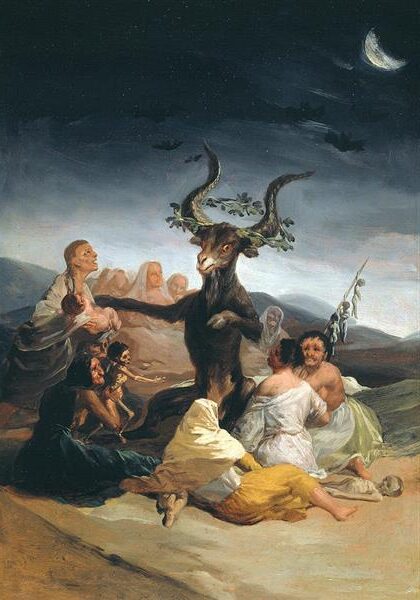
His unique approach combined technical mastery with emotional directness. Unlike contemporaries who idealized their subjects, Goya portrayed reality with unflinching honesty.
Key aspects of his mature style included:
- Dramatic contrasts between light and shadow
- Psychological depth in portraiture
- Unidealized human figures
- Social commentary through visual metaphor
Goya’s prints, particularly “Los Caprichos” (1797-1798), showcased his ability to blend fantastical elements with social criticism. These works influenced generations of artists interested in exploring the darker aspects of human nature.
Notable Techniques and Material Use
Goya experimented extensively with materials and techniques throughout his career. His mastery of etching and aquatint revolutionized printmaking. The “Disasters of War” series demonstrated how these techniques could convey the brutality of conflict with unprecedented realism.
In painting, Goya developed a loose, expressive brushwork that anticipated Impressionism by nearly a century. His late works show increasingly bold application of paint, sometimes applied with palette knives or even his fingers.
Goya’s use of color evolved from the bright palette of his early work to more restricted, somber tones. His innovative approach included:
- Expressive brushwork that emphasized emotion over detail
- Limited color palettes that heightened dramatic impact
- Experimental techniques including scratching into wet paint
- Combinations of media (oil, fresco, mixed materials)
These technical innovations helped him capture the turbulence of his era while establishing him as a pioneer who bridged Classical and Modern art.
Legacy and Influence
Francisco Goya’s artistic vision transcended his own time, leaving an indelible mark on generations of artists who followed. His unflinching portrayal of human suffering and social critique established new possibilities for visual expression that continue to resonate today.
Impact on 19th-Century Art
Goya’s influence on 19th-century art was profound and far-reaching. His dark, emotionally charged later works directly inspired the Romantic movement that emerged after his death.
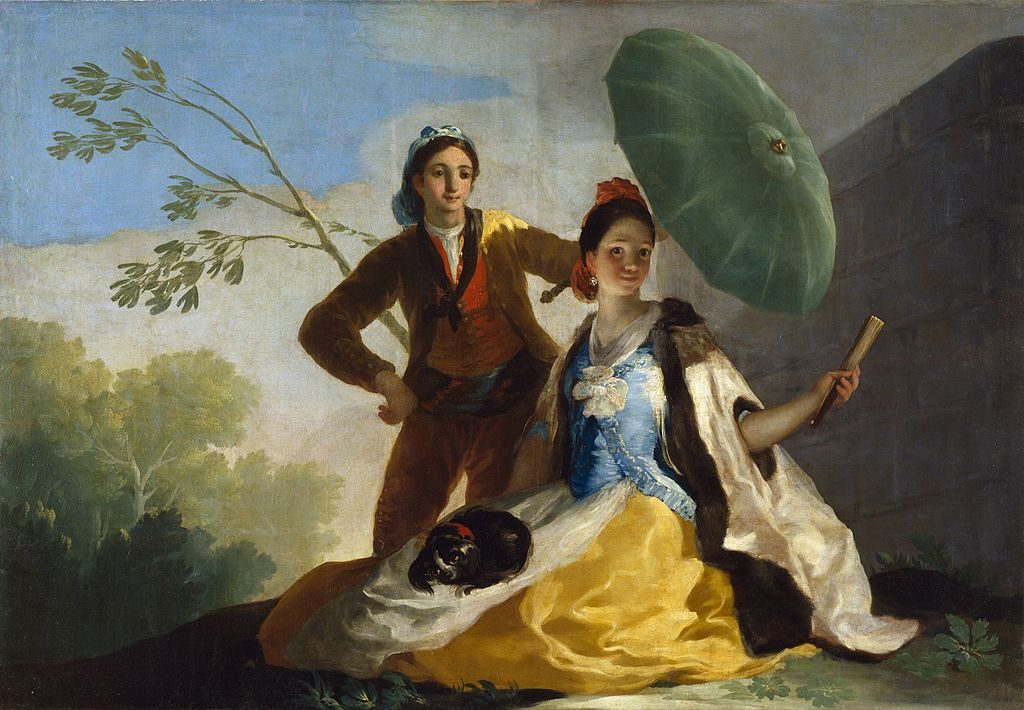
The Parasol (1777) by Francisco Goya
Artists like Eugène Delacroix and Théodore Géricault adopted Goya’s dramatic use of light and shadow to convey emotional intensity. His unflinching portrayal of war’s horrors in The Disasters of War series established a new visual language for depicting conflict.
French Realists, including Gustave Courbet, drew inspiration from Goya’s social commentary and willingness to depict uncomfortable truths. The psychological depth found in Goya’s portraits influenced how later artists approached character studies.
His technical innovations, particularly in printmaking, expanded the expressive possibilities of etching and aquatint techniques that many 19th-century artists subsequently explored.
Influence on Modern and Contemporary Art
Goya’s psychological exploration and stark imagery made him a forerunner of Expressionism and Surrealism. His “Black Paintings” created at Quinta del Sordo anticipate the emotional intensity found in works by Edvard Munch and Ernst Ludwig Kirchner.
Pablo Picasso drew direct inspiration from Goya’s The Third of May 1808 when creating his anti-war masterpiece Guernica. The distorted figures and nightmarish qualities in Goya’s late works resonated with Surrealists like Salvador Dalí.
Contemporary artists continue to reference Goya when addressing themes of:
- Political oppression
- War and violence
- Human irrationality
- Social critique
Jake and Dinos Chapman, the British artists, have directly engaged with Goya’s Disasters of War etchings, creating controversial reinterpretations that examine violence in modern contexts.
Preservation and Study of His Works
The Prado Museum in Madrid houses the world’s most comprehensive collection of Goya’s paintings, including masterpieces like The Third of May 1808 and the complete “Black Paintings” series. This central repository allows scholars and art lovers to study his artistic evolution.

Portrait of Manuel Godoy (1801) by Francisco Goya
Conservation efforts have helped preserve Goya’s fragile works on paper, including his crucial print series. Digital archiving projects now make these works accessible to global audiences.
Academic interest in Goya remains vigorous, with new interpretations emerging as scholars apply fresh perspectives to his complex body of work. Recent technical analyses have revealed Goya’s working methods and materials, enhancing our understanding of his creative process.
Museums worldwide regularly feature Goya in exhibitions that connect his social critique to contemporary issues, demonstrating his continued relevance.
Frequently Asked Questions
Francisco Goya’s life and work raise many questions about his style, influences, and impact on art history. His remarkable evolution as an artist and his response to the turbulent events in Spain created a unique artistic legacy.
What are the defining characteristics of Francisco Goya’s artistic style?
Goya’s style combines technical mastery with emotional depth and social commentary. He used dramatic contrasts of light and dark, especially in his later works.
His brushwork evolved from the refined techniques of his early career to more expressive, looser strokes in his mature works. This shift helped convey emotional intensity.
Goya often depicted grotesque or disturbing imagery to critique society. He didn’t shy away from showing human cruelty and suffering in realistic detail.
How did the historical context of Spain influence Goya’s artwork?
The Napoleonic invasion of Spain (1808-1814) profoundly affected Goya’s work. His paintings “The Third of May 1808” and “The Second of May 1808” directly responded to this violent occupation.
The Spanish Inquisition and political instability inspired his critical view of authority. These experiences fueled his satirical prints that exposed corruption and superstition.
Spain’s transition from Enlightenment ideals to conservative restoration shaped Goya’s increasingly pessimistic worldview in his later years.
What are some of the most iconic paintings created by Francisco Goya and why are they significant?
“The Third of May 1808” stands as Goya’s most famous work. It depicts Spanish civilians being executed by French soldiers, creating a powerful anti-war statement that influenced later artists like Picasso.
“Saturn Devouring His Son” from the Black Paintings series shows raw psychological horror. This disturbing image reveals Goya’s exploration of human darkness and irrationality.
“The Naked Maja” caused controversy for its direct portrayal of female nudity. The painting challenged artistic conventions of the time and demonstrated Goya’s willingness to break taboos.
How did Francisco Goya’s work evolve throughout his career?
Goya began as a rococo-influenced tapestry designer creating bright, decorative works for the Spanish royal family. These early paintings featured optimistic scenes of Spanish life.
His middle period saw him become the official court painter while also creating more personal works. The contrast between his official portraits and his private etchings grew during this time.
After illness left him deaf in 1793, his work turned darker and more introspective. His final years produced the deeply personal Black Paintings, revealing his psychological struggles and disillusionment.
In what ways did Francisco Goya contribute to the Romanticism movement in art?
Goya emphasized emotion and individual expression over rigid classical rules. This approach aligned perfectly with Romanticism’s core values.
His focus on dreams, irrationality, and the subconscious influenced Romantic artists. These elements appeared most strongly in his “Caprichos” etchings and Black Paintings.
Goya’s social critique and political engagement reflected Romanticism’s concern with freedom. His works often showed the struggle between oppression and liberty.
What was the impact of Goya’s later works, particularly the Black Paintings, on modern art?
The Black Paintings anticipated Expressionism’s emotional intensity and distortion. Artists like Edvard Munch and Ernst Ludwig Kirchner drew inspiration from Goya’s raw psychological explorations.
Goya’s unflinching portrayal of violence influenced 20th-century war artists. His honest depiction of conflict’s brutality provided a template for modern anti-war art.
The surreal elements in the Black Paintings connected to later Surrealism. The dreamlike, irrational qualities in works like “The Dog” and “Witches’ Sabbath” foreshadowed this important 20th-century movement.


